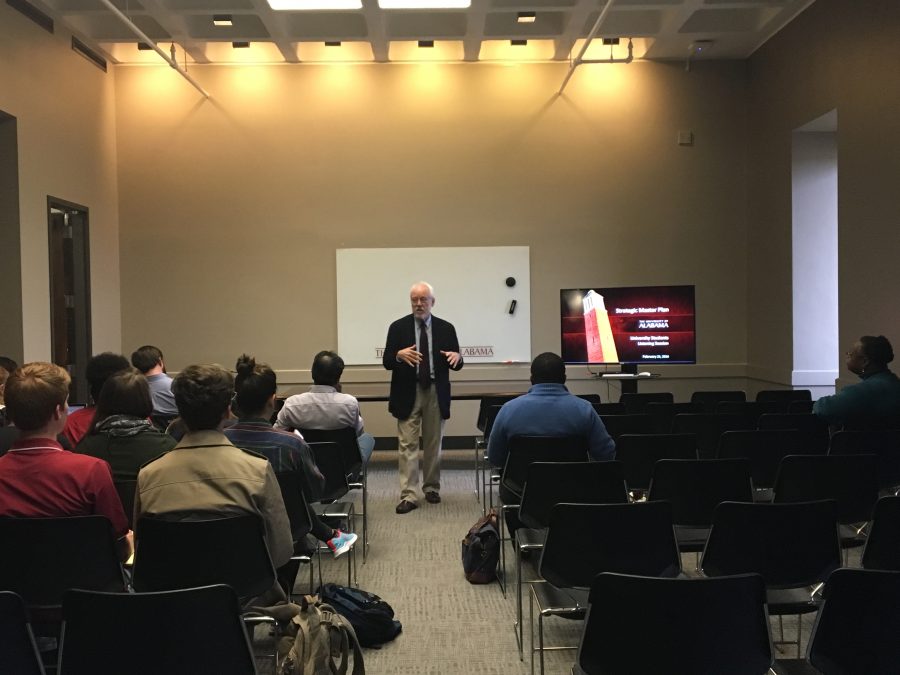On Tuesday, attendees of the strategic plan listening session left with more anticipation than answers.
Darrell Meyer, a consultant for KPS, the group that deals with the University’s Master Plan, led the meeting. He started off talking about the Strategic Planning Council’s website where students, faculty and staff have been encouraged to take a survey to give the council a good starting point to make a five-year Master Plan (which differs from the previous 10 year plan).
“The attention of a 10-year plan tends to fall off radically after the first three or four years,” Meyer said.
According to Meyer, as of the presentation, the survey has received about 1200 responses, and only about 200-300 of those were from undergraduate students. That’s only .8 percent of undergrads at the University. This kind of interest was also reflected in the attendance of the meeting which had around 30 people, most of whom were undergrads and another group of whom said they were there for work.
The survey itself is completely open response and consists of four questions:
What is your current impression of the University of Alabama?
Please complete the following: By 2021, my vision for The University of Alabama would be…
If you had the power to support your vision, what would you focus on and why?
What else, if anything, would you like to have considered as we undertake this planning process?
Meyer then went through the student responses to each question, which he paired with a wordle to demonstrate the prominence of certain issues.
One of the most mentioned issues for the respondents was diversity, which makes sense considering the diversity subcommittee is the first and only subcommittee to be established under the council.
“What I’m more concerned with as a design person,” Meyer said, “is a lack of interaction. This is a pretty diverse campus for its size, but the interaction, from what we’ve heard from the students, the faculty, the graduate students, the staff, the parents, alumni who’ve completed the survey is they’re not happy with what is happening with diversity on this campus.”
He then spent the last 30 minutes of the session listening to attendees’ suggestions and questions. However, most questions were met with the answer, I don’t know.
A few key people were in attendance like the Vice President for Strategic Communications Linda Bonnin and Lane McLelland from the diversity subcomittee taking notes for suggestions for the council and, McLelland specifically, answering a question or two about the diversity subcommittee.
Charlie Catoire, a sophomore majoring in mechanical engineering, said he was disappointed in the outreach effort by the council.
“I expected a lot of people, and I show up and there are 20 people,” he said. “Clearly they aren’t doing the best job getting the word out about these things and getting more people involved.”







